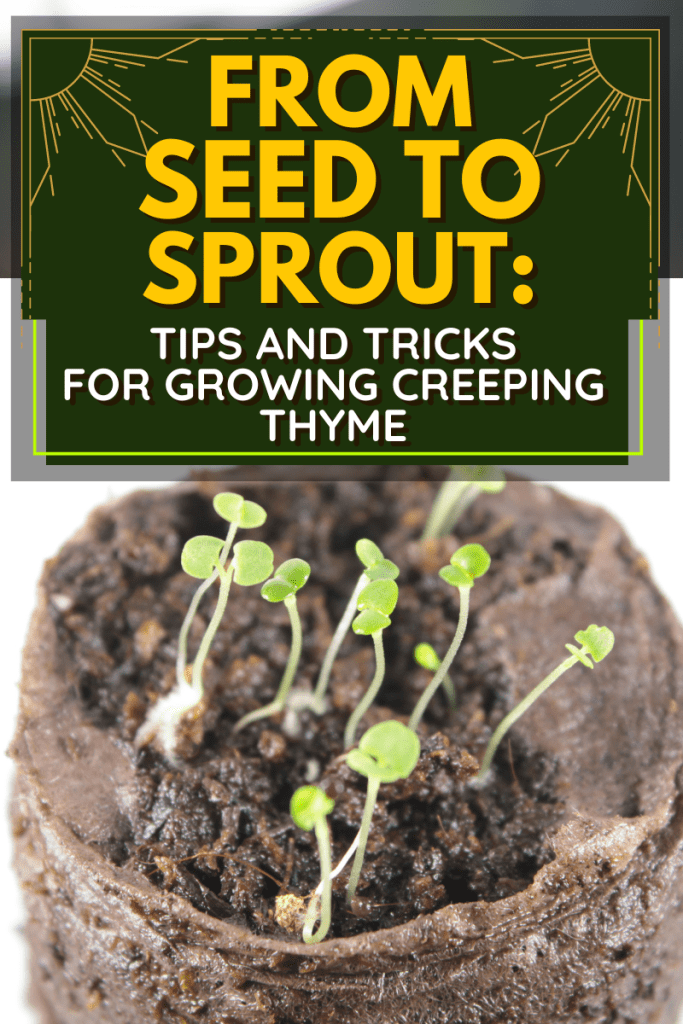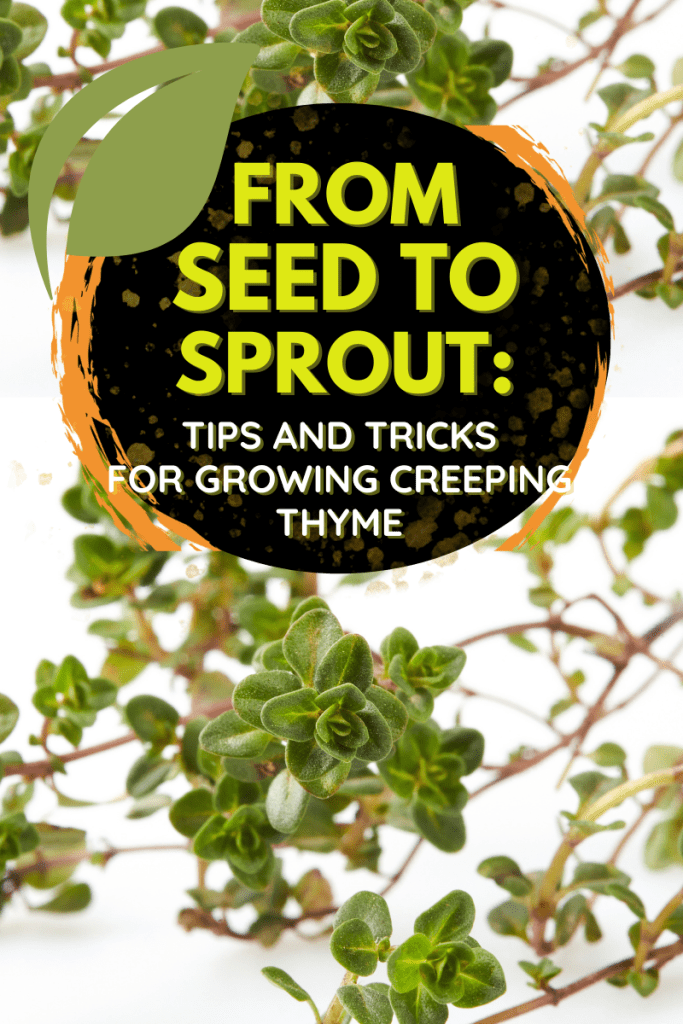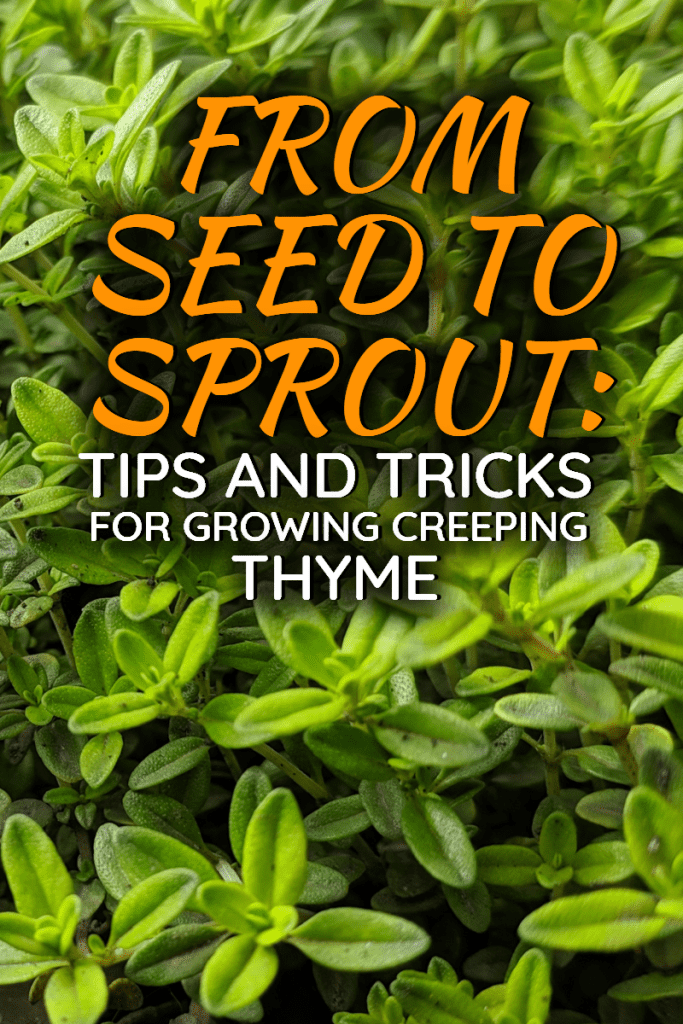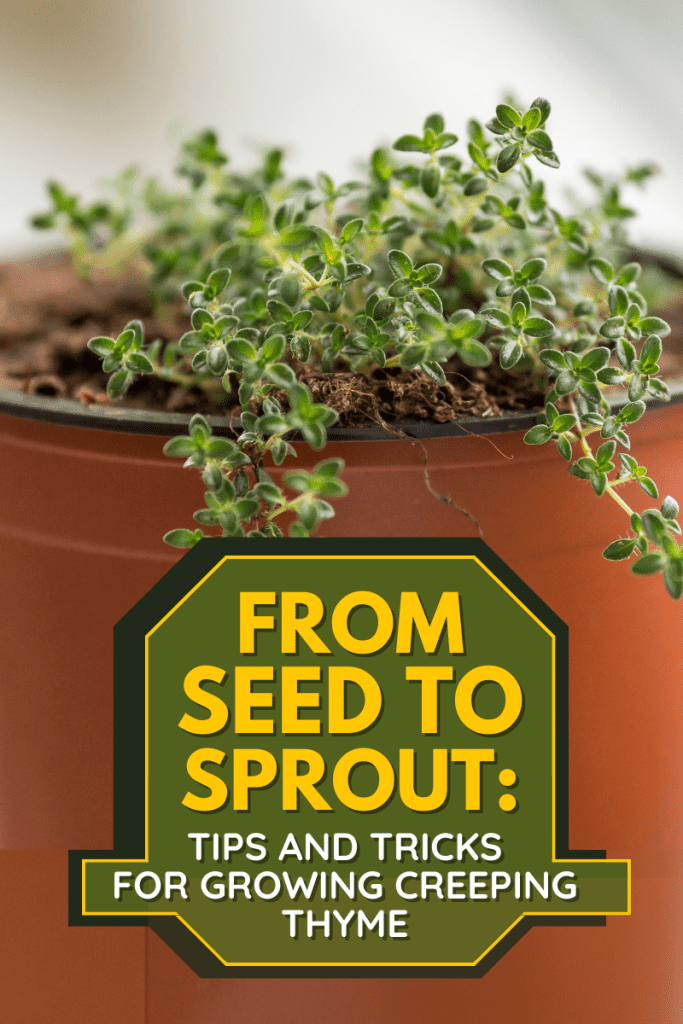If you're looking for a low-maintenance, fragrant ground cover that is both beautiful and useful, look no further than creeping thyme. This versatile herb is easy to grow from seeds and can add color and texture to your garden.
In this complete guide to growing and sowing creeping thyme from seeds, we will cover everything you need to know to get started. We'll walk you through each step to ensure that you'll get a bountiful harvest.
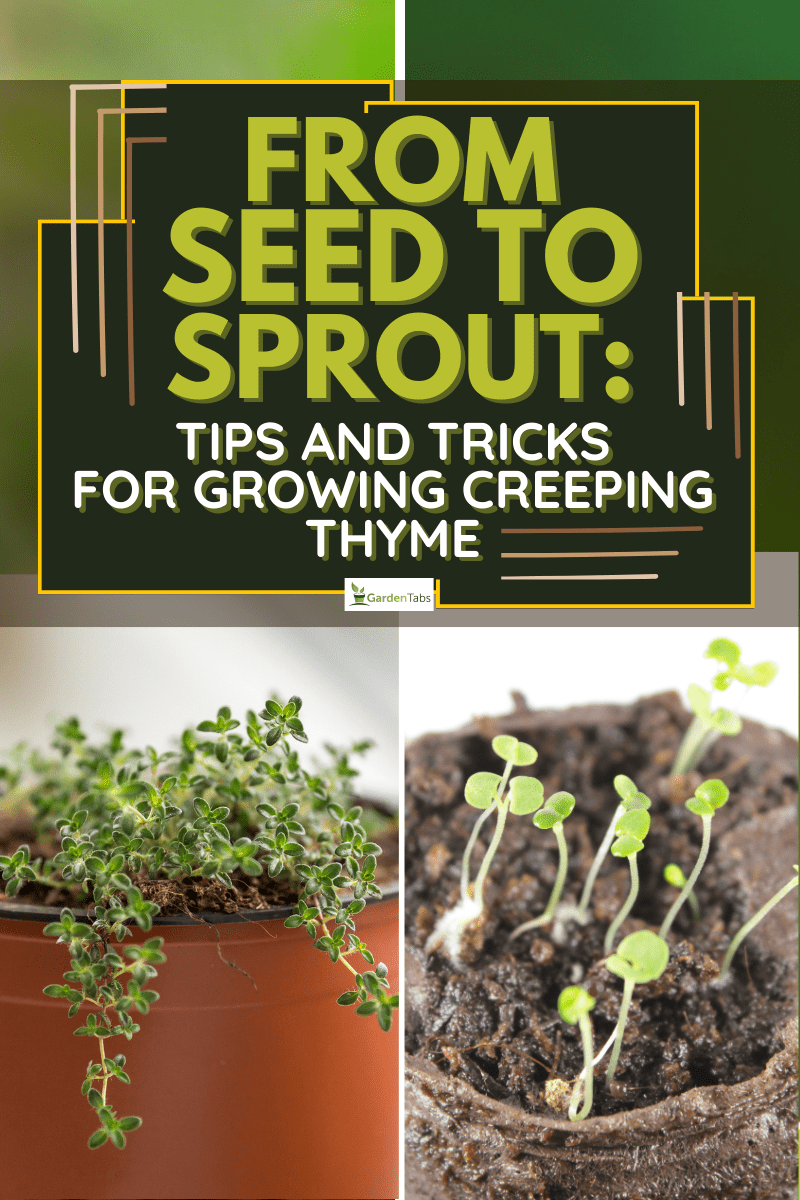
Growing Creeping Thyme from Seeds
Creeping thyme (Thymus praecox) is a low-growing, spreading herbaceous perennial plant that is commonly used as a ground cover in gardens and landscapes. It is a member of the mint family and is native to Europe and Asia.
When to Plant Creeping Thyme Seeds
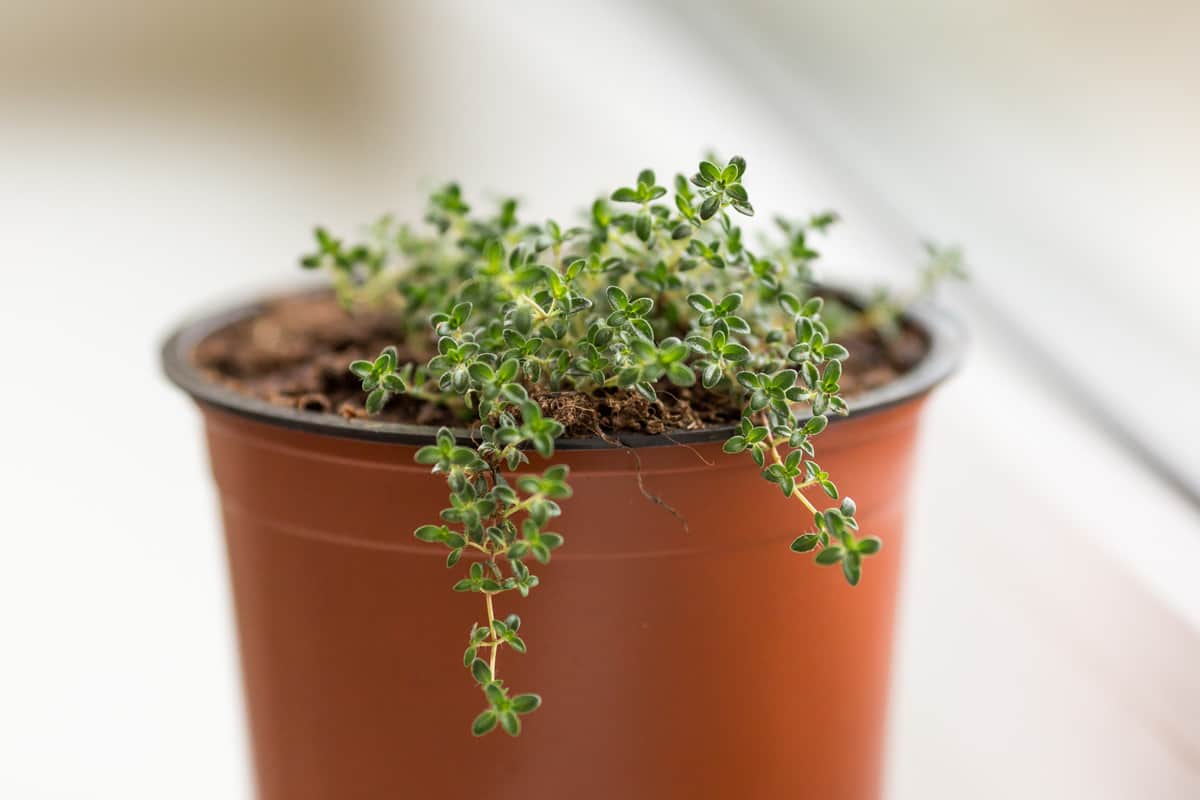
Creeping thyme seeds can be planted in the late spring or early summer when the temperature is above 60°F.
This is the best time to plant creeping thyme seeds as it allows the plants to establish themselves before the winter frost sets in.
How to Prepare the Soil for Planting
Creeping thyme grows best in well-draining soil that is slightly alkaline with a pH between 6.0 and 8.0.
Before planting, loosen the soil and remove any weeds or debris. Mix in some compost or well-rotted manure to improve soil fertility and drainage.
How to Sow Creeping Thyme Seeds
Creeping thyme seeds can be sown directly into the soil or started indoors and transplanted later.
When sowing directly, scatter the seeds and cover them with a thin layer of soil. Water the area gently and keep the soil moist until the seeds germinate.
If you plan to start them indoors, sow the seeds in a seed-starting mix and keep the soil moist until they germinate.
The number of creeping thyme seeds you need to sow per square foot can vary depending on the cultivar and the desired density of the plants.
However, as a general rule of thumb, you can sow around ten to 20 seeds per square foot. Don't forget that creeping thyme is a slow-growing plant, so you may need to be patient as it establishes and spreads.
Caring for Creeping Thyme Seedlings

Creeping thyme seedlings require consistent moisture until they are established. Once established, they are drought-tolerant and require little maintenance.
When the seedlings are a few inches tall, thin them out to allow at least six inches of space between each plant. This will give the plants room to spread and prevent overcrowding.
Maintaining Creeping Thyme
Watering and Fertilizing Creeping Thyme
One of the best things about creeping thyme is that it requires minimal watering.
You should water your thyme weekly. During hot weather, you may need to water it more frequently. Try not to overwater, as this can lead to root rot and other issues.
You should fertilize creeping thyme once a year in the spring with a balanced fertilizer. A fertilizer that has equal amounts of nitrogen, phosphorus, and potassium is best.
Check out this balanced fertilizer on Amazon.
Pruning and Trimming Creeping Thyme
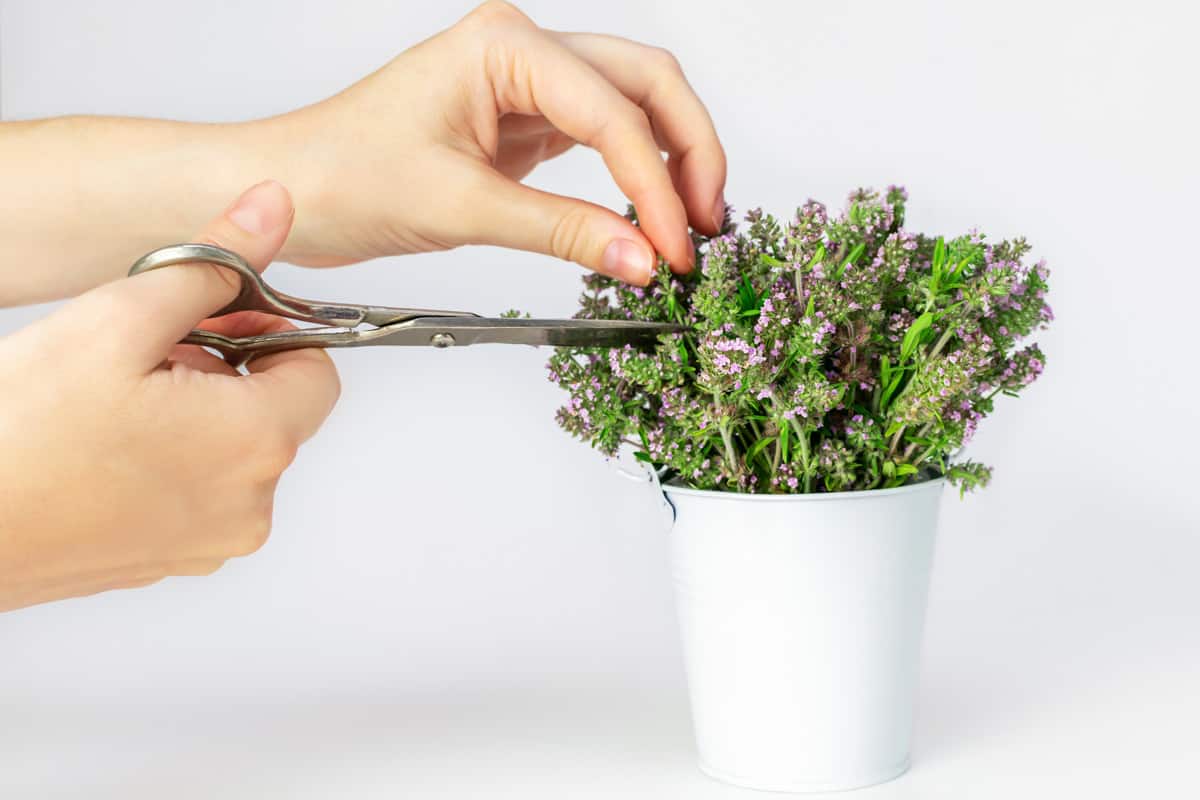
Prune back the vines in the early spring to prepare the plant for the growing season ahead. This will help promote healthy growth and prevent the plant from becoming too woody.
After the flowers die back, prune again to keep the plant neat and tidy. You can also trim creeping thyme throughout the growing season to keep it from spreading too far.
Dealing with Pests and Diseases
Creeping thyme is generally resistant to pests and disease, but you may encounter a few issues.
Spider mites, aphids, and whiteflies can be an issue in hot, dry weather. To prevent these pests, keep the plant well-watered and avoid over-fertilizing.
If you do notice pests, treat them with insecticidal soap or neem oil.
Get this bottle of neem oil on Amazon.
Powdery mildew and root rot can also be problems, especially in humid weather. To prevent these issues, avoid overwatering and make sure the plant has good air circulation.
Tips on Growing Creeping Thyme
Here are some of the best tips to remember on growing creeping thyme from seeds:
- Start seeds indoors in early spring, six to eight weeks before the last frost date.
- Use a well-draining seed starting mix and cover the seeds lightly with soil.
- Keep the soil moist but not waterlogged.
- Once the seedlings have grown to about two inches tall, transplant them to their permanent location in the garden or landscape.
- Choose a sunny location with well-draining soil for best results.
- Water regularly, especially during hot, dry weather.
- Prune back the plants in late summer to promote bushier growth and prevent them from becoming too woody.
- Fertilize sparingly, as creeping thyme prefers lean soil.
Harvesting and Using Creeping Thyme
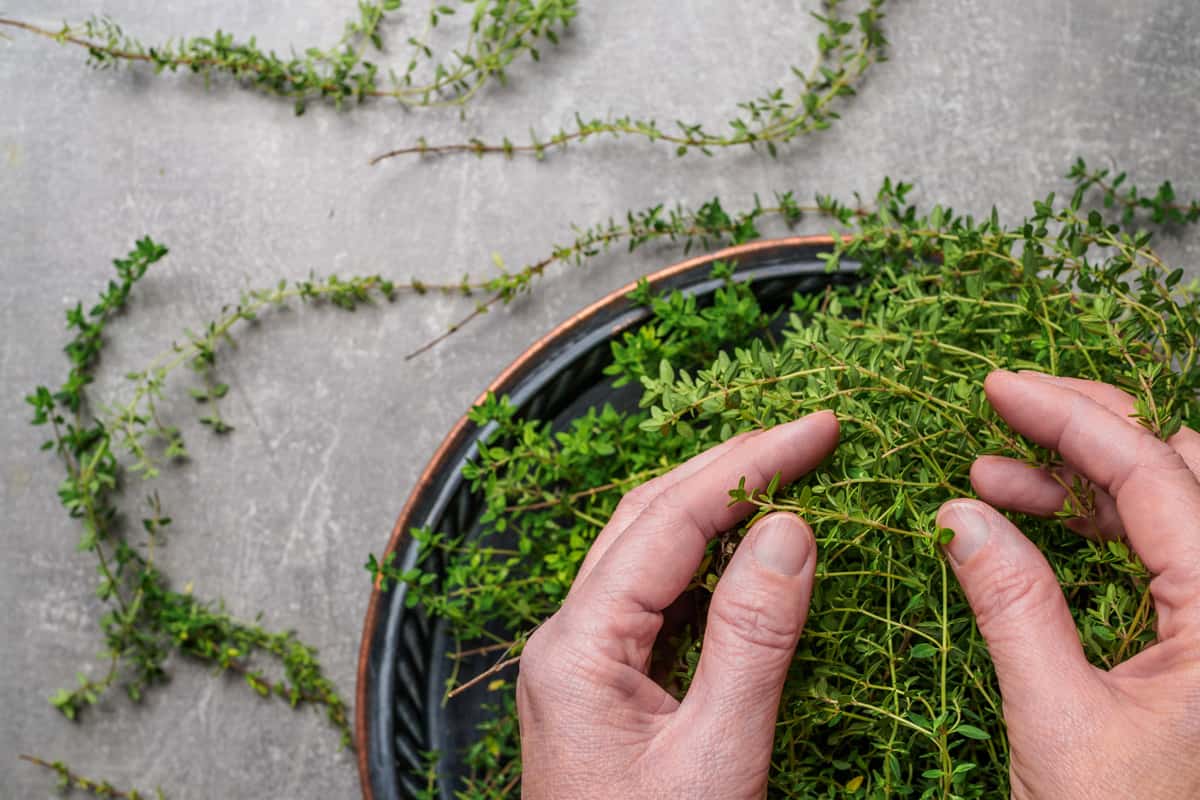
When to Harvest Creeping Thyme
Creeping thyme can be harvested once it has reached a height of at least four inches.
The best time to harvest is when the plant is in full bloom, as this is when the oils are at their most concentrated. Avoid harvesting creeping thyme too often, because it can weaken the plant and reduce its overall health.
How to Harvest Creeping Thyme
To harvest creeping thyme, simply cut the stems with a sharp pair of scissors or pruning shears. Remember to leave some of the plant intact because this will allow the plant to continue growing and producing new foliage.
Once harvested, the thyme can be used fresh or dried for later use.
Ways to Use Creeping Thyme
Creeping thyme is a popular choice for gardeners because of its many benefits. It is a versatile herb that can be used in a variety of ways. Here are some ideas:
- Add thyme to homemade herbal tea for a refreshing and soothing drink.
- Use thyme as a natural insect repellent by placing crushed sprigs around your home or garden.
- Creeping thyme can attract pollinators.
Creeping thyme is a great addition to your garden and cooking. This low-maintenance herb is easy to grow and care for, which makes it a perfect, colorful addition to your home.
Read more: Does Creeping Thyme Grow In Shade?




